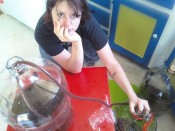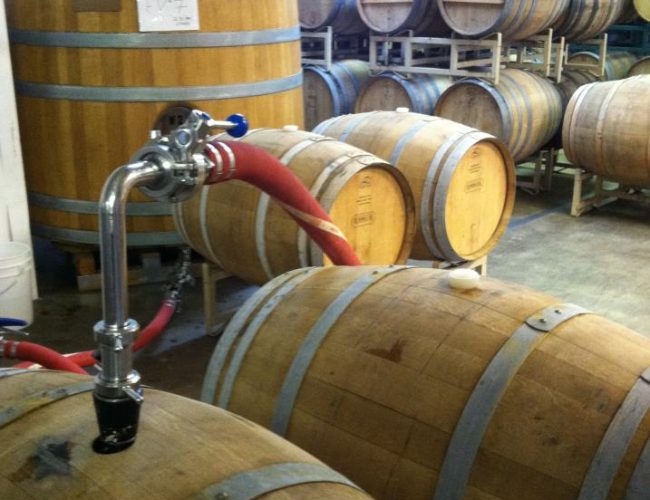Crooked Stave Artisan Beer Project was founded by Chad Yakobson in 2010 and recently opened a barrel cellar and tasting room in west Denver, Colo. Most of Crooked Staves’ beers are fermented with 100 percent Brettanomyces, which makes them prime candidates for cellaring, as it only enhances their complexity with time. For Yakobson, the wood of the aging barrel is a fifth ingredient, alive and breathing with the beer as it ages. Here he shares his process for prepping a barrel for beer.
How to Prep a Barrel
Any craftsman needs the right tools and preparing a barrel to age beer in is no different. The basic tool you will undoubtedly need is called a hoop driver. This is a tool used for tightening and removing barrel hoops, which are the round pieces of metal that hold the wooden staves together. The tool works similarly to a chisel, and you use a hammer to hit the back end of the tool.
Taking the Barrel Apart
Remove any small nails that are in the hoops with pliers. Using your hoop driver and hammer tap the top hoop lightly in a circular motion until it is off. Repeat for the second and third hoops. Never remove all the hoops or the barrel will fall apart! With the first hoops removed, you can lightly push the top of the staves outward, again in a circular motion, until the head of the barrel falls in.
Cleaning the Barrel
Once you have the barrel open, inspect the inside. Since the staves of a barrel start straight and curve with age, sometimes small blisters occur and hide bad bacteria. These need to be scraped off, or you risk having an overly astringent final product. Chad also recommends lightly scraping off the inside top layer of the whole barrel for the same reason. Be careful not to scrape off too much though, or you risk losing the goodness of the barrel that you want in your beer.
Putting the Barrel Back Together
Chad uses a homemade tool made from an old barrel hoop to pop the head into place, but some sort of clean piece of thin metal should do the trick. Next put the biggest hoop back on, tightening it in a circular motion around the barrel. Chances are it will go down further than it started, but that just means your barrel is tighter. Once all three hoops are on and tight, rinse the barrel with clean water, and you are ready for some barrel aging!
 Kirby Bennett’s love of craft beer started in 2002 when she was living in Amsterdam and discovered an amazing bottleshop called De Bierkoning. A long ways now from sipping La Trappe on the canals, she is currently the Craft Beer Program intern for the Brewers Association. She is a Cicerone® Certified Beer Server, holds a BA in English, dabbles in homebrewing, and makes a mean quinoa salad. She hopes to continue her career somewhere in the distribution world, then someday open a sustainable beer bar in whatever city she decides to settle in!
Kirby Bennett’s love of craft beer started in 2002 when she was living in Amsterdam and discovered an amazing bottleshop called De Bierkoning. A long ways now from sipping La Trappe on the canals, she is currently the Craft Beer Program intern for the Brewers Association. She is a Cicerone® Certified Beer Server, holds a BA in English, dabbles in homebrewing, and makes a mean quinoa salad. She hopes to continue her career somewhere in the distribution world, then someday open a sustainable beer bar in whatever city she decides to settle in!
CraftBeer.com is fully dedicated to small and independent U.S. breweries. We are published by the Brewers Association, the not-for-profit trade group dedicated to promoting and protecting America’s small and independent craft brewers. Stories and opinions shared on CraftBeer.com do not imply endorsement by or positions taken by the Brewers Association or its members.

Share Post